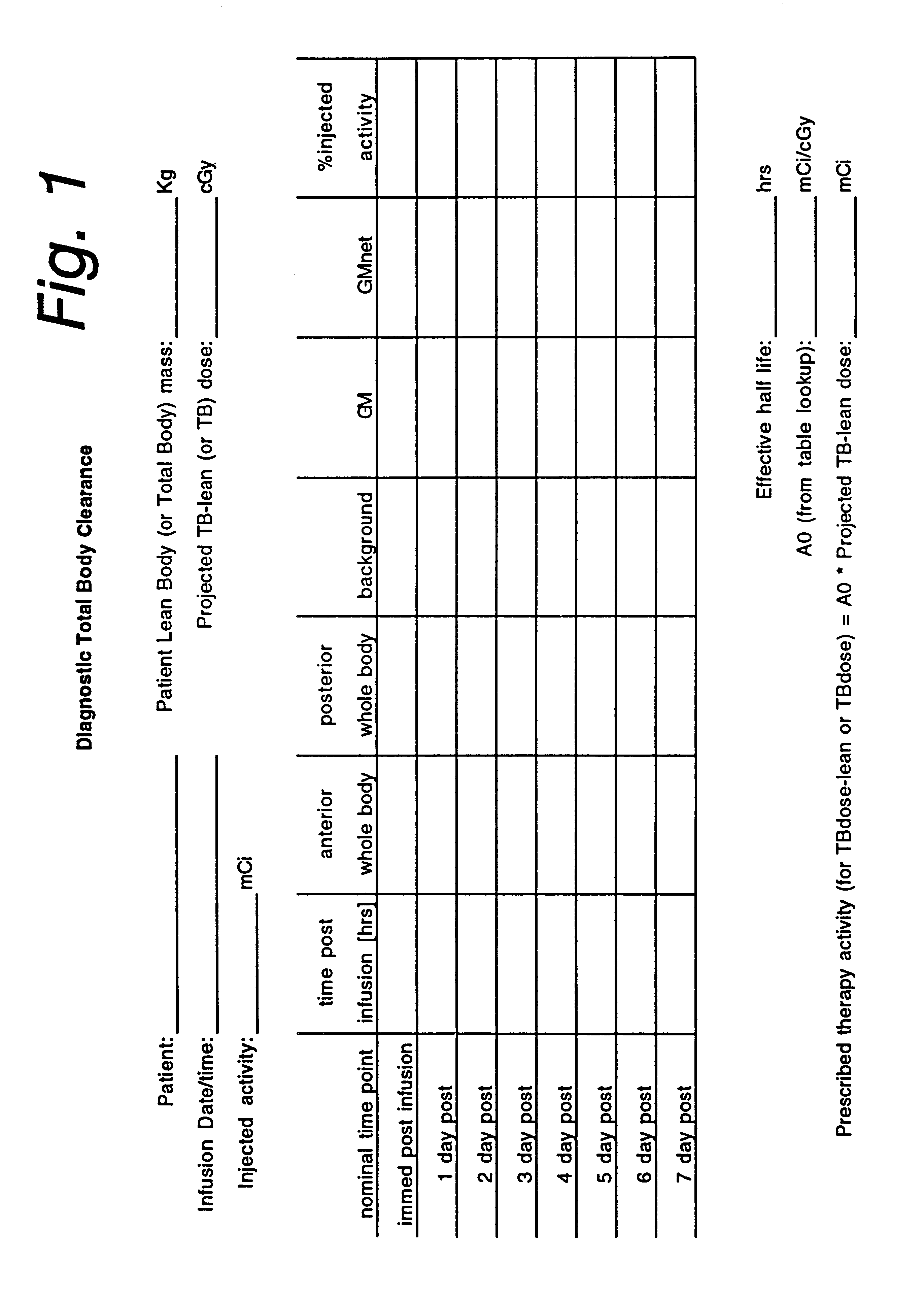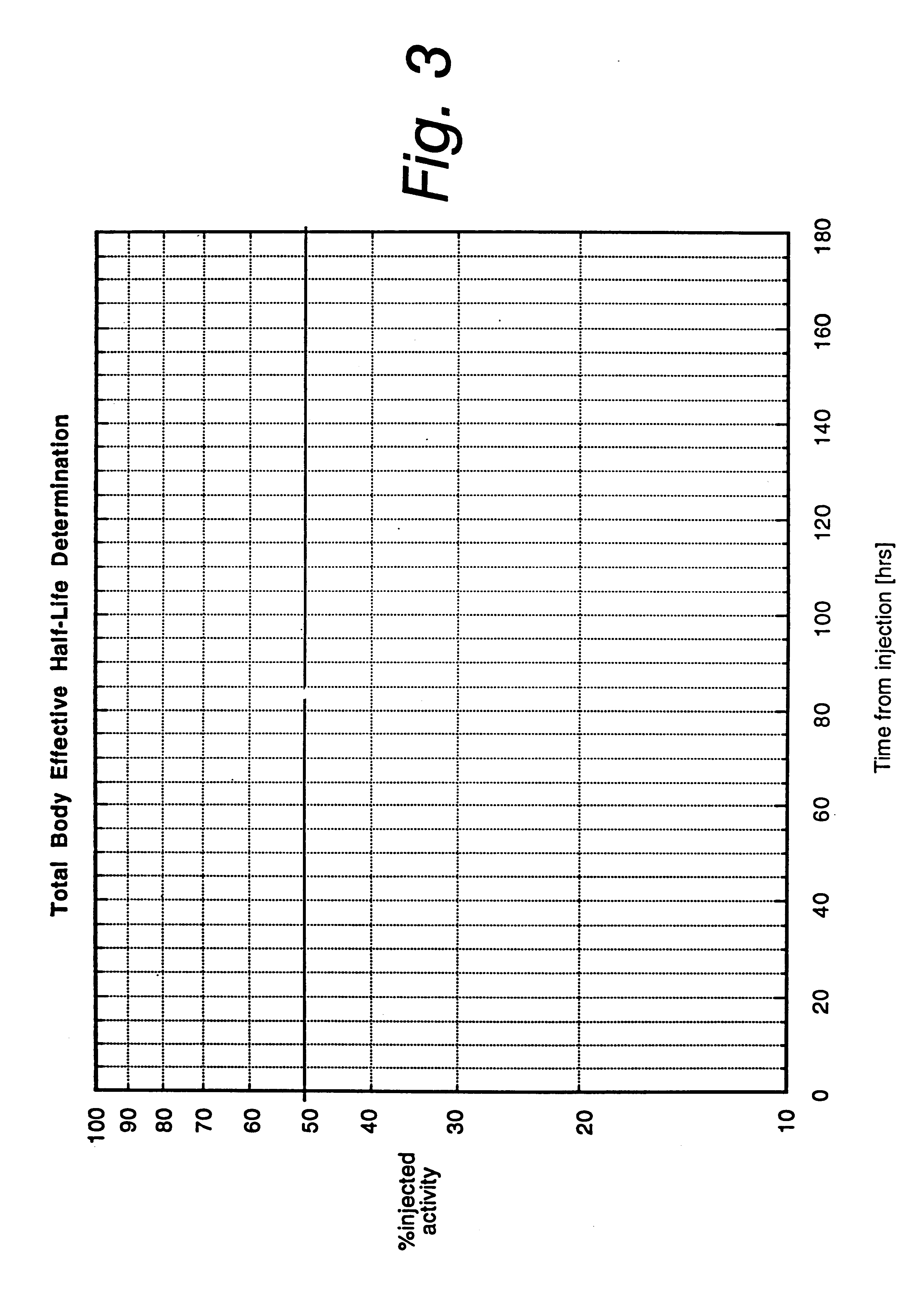Method of establishing the optimal radiation dose
a radiation dose and optimal technology, applied in the direction of radioactive preparation carriers, x-ray/gamma-ray/particle irradiation therapy, therapy, etc., can solve the problems of radiation drug administration, bleeding, infection or death, undesirable side effects
- Summary
- Abstract
- Description
- Claims
- Application Information
AI Technical Summary
Problems solved by technology
Method used
Image
Examples
Embodiment Construction
A phase-I dose-escalation trial of I-131 labeled B1 antibody for the treatment of patients with non-Hodgkin's lymphoma was undertaken using a dose-escalation scheme designed around increasing levels of total body radiation dose. The overall results of the studies of 21 patients are set forth in the table of FIG. 10. (The study began with 34 patients, hence the listing in the left-hand column of patient numbers with some patient numbers missing. Some of the missing patients, i.e., nos. 3, 11, 12, 17, 18, 20-23, 25, 26, 30, and 33, were bone marrow transplant patients or were patients who were subsequently not treated for various reasons, e.g., development of human antimouse antibody.)
Hematological toxicity was the major toxicity observed in the 21 patients studied that received radioimmunotherapy. Patients were treated with radioimmunotherapy doses calculated from tracer dosimetry studies (NaI probe) to deliver doses to the whole body ranging from 25 to 85 cGy. Hematological toxicity...
PUM
| Property | Measurement | Unit |
|---|---|---|
| mass | aaaaa | aaaaa |
| time | aaaaa | aaaaa |
| conjugate view gamma camera imaging | aaaaa | aaaaa |
Abstract
Description
Claims
Application Information
 Login to View More
Login to View More - R&D
- Intellectual Property
- Life Sciences
- Materials
- Tech Scout
- Unparalleled Data Quality
- Higher Quality Content
- 60% Fewer Hallucinations
Browse by: Latest US Patents, China's latest patents, Technical Efficacy Thesaurus, Application Domain, Technology Topic, Popular Technical Reports.
© 2025 PatSnap. All rights reserved.Legal|Privacy policy|Modern Slavery Act Transparency Statement|Sitemap|About US| Contact US: help@patsnap.com



